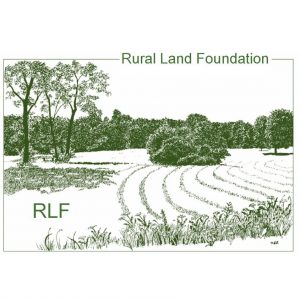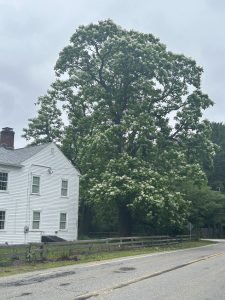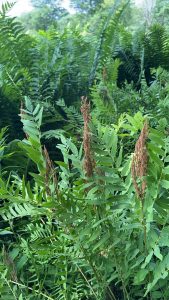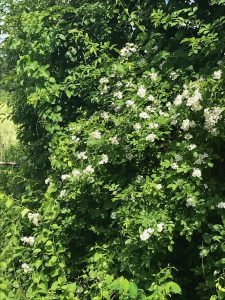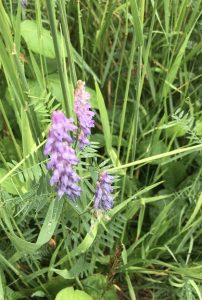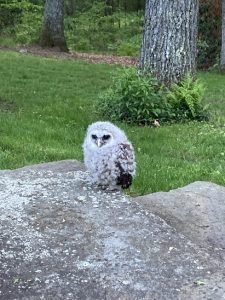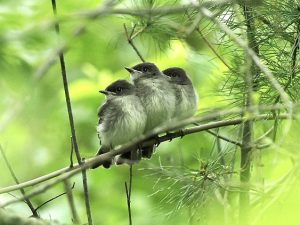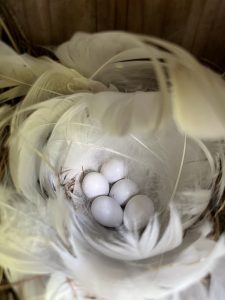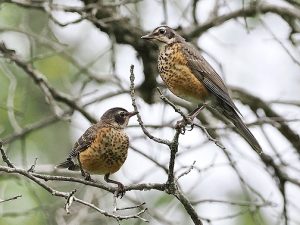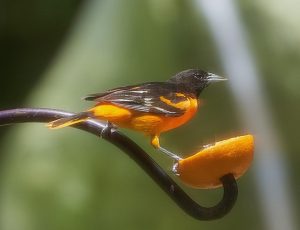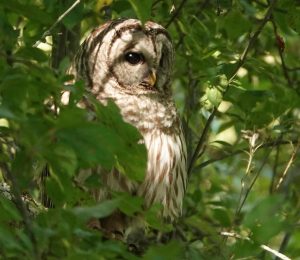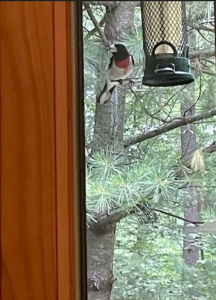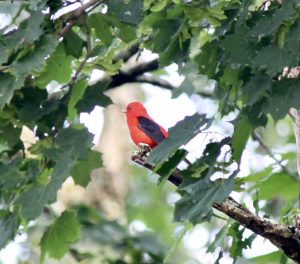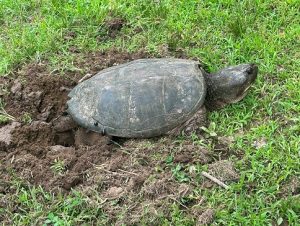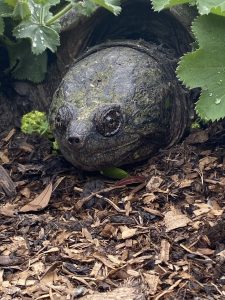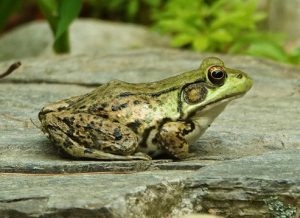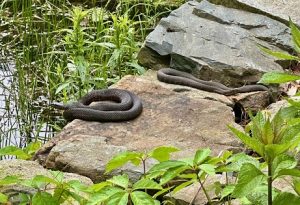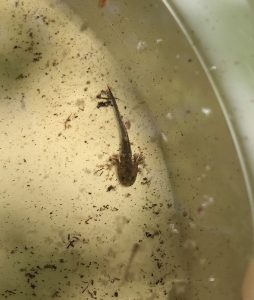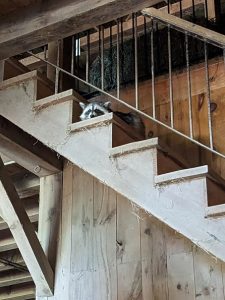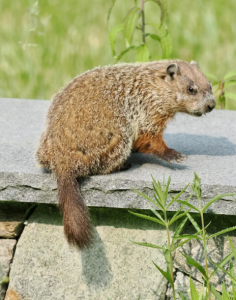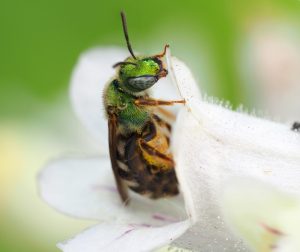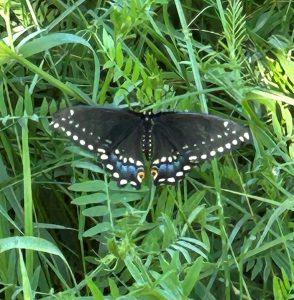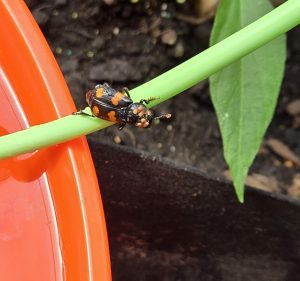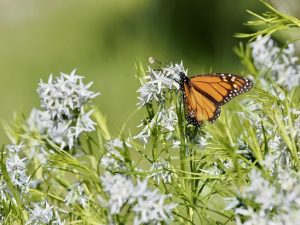A recent post on Lincoln Talk mentioned stoats stealing eggs from a robin’s nest at Lindentree Farm. “Stoat” is what is more commonly called a short-tailed weasel (also called an ermine). Weasels can slip through very narrow openings and were responsible for killing some of our chickens years back. In Massachusetts we also have long-tailed weasels and both weasels are part of the Mustelid family, which includes mink, river otter, and fisher. Carol Roede’s trail cam over the last month has picked up bobcats often, and we do not need trail cams to see mammals such deer of various ages, rabbits, chipmunks, and woodchucks, to name a few. Will Leona, Conservation Ranger, reports that beaver have been very active in town, perhaps because beaver kits, born two years ago, are branching out to set up territories. Will has photographed a variety of fauna making use of beaver dams, including deer and great blue herons.
June 2025 Wildlife Column
Written by Gwyn Loud for the Lincoln Land Conservation Trust. She welcomes your sightings and questions at 781-259-8690 or gwynloud555@gmail.com
The song “June is Bustin’ Out All Over”, from the musical Carousel has been going through my head this month, thanks to being surrounded by new growth everywhere, whether blossoms, animal babies, or every shade of green. The weather has been variable, giving us some chilly nights and unseasonably hot days, and thirteen consecutive rainy Saturdays. The streak was finally broken on Saturday, June 21.
Summer arrived officially on the solstice, June 20, and we are just coming out of a record-breaking heat wave as this column reaches your inbox. Lincoln hit 100℉ on June 24, and heat records were broken across much of the nation. The historical monthly average rainfall in MetroWest for June is 3.93” and since the beginning of the month, 2.02” of rain has been recorded. We are no longer in drought, although careful use of water is always important.
Black locusts and horse chestnut trees displayed their clusters of white flowers earlier this month, as did the yellowwood trees along Library Lane. Now we see catalpas blooming around town, including the twisted tree by the Library (it is a late bloomer). The mulberries in my mulberry tree are still green but even so, birds and chipmunks are starting to eat them. Multiflora-rose is blooming and seed-head spikes of broad-leaved dock seem plentiful along roadsides. Bedstraw and milkweed have spread in infrequently-mowed fields such as Browning North; the milkweed flowers are about to open and we hope they will attract monarch butterflies. In wet meadows and the woods, ferns of several varies are flourishing, and in fields you may come across plants such as butter ‘n eggs, common toadflax, fleabanes, cow parsley, or tufted vetch. On ponds, lilies float in regal beauty. In her Nature Almanac and Calendar, Francie von Mertens writes about pond lilies, “To solve the lack-of-oxygen challenge faced by wetland plants, oxygen extracted from the air through leaf pores is delivered by a pumping action down long leaf teas to thick roots (rhizomes) anchored at the pond bottom. An interesting pollination strategy: Insects are attracted to a small pool of sugary liquid within the blossom. As they struggle to escape the sticky liquid, pollen washes off their bodies and settles on the female receptor (stigma). Not all insects survive the experience.”
This is peak nesting season for birds, with some starting second broods. As Ron McAdow wrote, “First-brood catbirds, chickadees, titmice, Baltimore orioles, red-bellied and downy woodpeckers are all around, begging and trying to learn how to be birds.” Ron photographed adult bluebirds trying to feed their second brood while “teenagers” from the first brood were still begging to be fed. Baby birds face many threats from predators and only about thirty percent survive their first year. Crows, for example, night snatch nestlings from a nest, house wrens could puncture eggs in a bluebird box, or snapping turtles might snatch baby goslings in the water. I just discovered that a brown-headed cowbird had laid an egg in ”my” Eastern phoebe’s nest. Cowbirds do not make their own nests, but lay eggs in the nests of smaller birds, hoping that the foster parents will incubate the egg along with their own, and feed the baby cowbird. Since the cowbird is usually bigger than the other babies, it can push the others aside to get more food. Apparently the parent birds do not notice that the imposter is dominating.
Avian parents feed their baby birds huge numbers of caterpillars, as they are easy to digest. As entomologist Doug Tallamy has written, “If you want to help birds, plant oak trees” because oaks are hosts to many species of caterpillars. If you find a baby bird, beware of trying to “rescue it”. See links below to learn what to do.
Barn swallows are nesting in my neighbors’ barn, and wood duck and mallard ducklings are swimming in the swamp nearby. Oddly, at Farrar Pond, there is just one mute swan evident, without the usual family of cygnets. Eastern bluebirds and tree swallows are raising families in bird boxes all over town. From Drumlin Farm, Pam Sowizral wrote, “ I saw a cedar waxwing pulling dried grasses out of a Baltimore oriole’s nest and fly off to use it in its own nest. Sneaky!”. Other birds nesting at Drumlin include green herons by one of the ponds, American redstarts on Bird Hill and, in the fields, song sparrows, common yellowthroats, and an indigo bunting and field sparrow. It is possible that two bobolink pairs (hard to see) are nesting. A few bobolinks were also seen in Farm Meadow, hopefully at least one pair raising young. Rosemary Lloyd, on Moccasin Hill, found a barred owlet on the patio and wrote, “Mama was back in the glade behind our house this morning—calling a sweeter song than the usual who-cooks-for-you. It was the same soothing coo she seemed to be calling to the fledging last night—so I wonder if the owlet was on the ground somewhere nearby again. I learned that the flightless baby can climb trees using beak and claws! Wish I had seen that!” The owlet disappeared, safely, we trust.
It is exciting that common loons are nesting again on the island on Flint’s Pond, as they did last year. Norm Levey has been observing them carefully, and wrote, “One adult tremoloed from the nest site followed by the other adult starting up in an athletic and dramatic display: snorkeling, diving, chasing, and exuberant dancing. Was the loon driving off an otter that was near the nest earlier? Ignored the snapping turtle. At 30 minutes both adults were off nest and some diving ensued. At 40 minutes both floated almost touching, circling each other, very alert and looking about —they appeared alarmed. Then the pair became calm and one adult tucked for a few minutes. One of the pair wailed at the end of my almost hour long watch.” Norm has photographed a bald eagle keeping watch from trees on the shoreline; no doubt it is hoping for an easy meal when the babies (one or two) hatch. It is likely that a pair of spotted sandpipers is nesting on the shore of the Pond.
Other birds of interest reported in the past month include a winter wren, veery, and northern waterthrush in the Van Leer Swamp, wood thrushes, ovenbirds and scarlet tanagers in many places, a blue-winged warbler, brown creepers singing, and red-shouldered hawks, fish crows, and common ravens giving characteristic calls. Common nighthawks, a least flycatcher, and an olive-sided flycatcher were also spotted.
Baltimore orioles and rose-breasted grosbeaks are among our most colorful summer residents and will come to feeders if you provide them. The orioles are known to come to hanging oranges cut in half and I have had them drinking from my hummingbird feeder.
In the world of reptiles, snapping and painted turtles have managed to dig holes and lay eggs, although some eggs are discovered and eaten by predators such as raccoons. Sadly, some turtles have been found crushed by cars; please continue to be watchful on the road. What you think is a stone may actually be a turtle. Residents have spotted milk snakes, and northern water snakes. The latter look scary and can snap if you get close, but they are not poisonous.
Bullfrogs can be heard giving their deep “jug-a-rum calls”, a sound which can carry quite a distance on a hot summer night. Both bullfrog and green frog tadpoles take two years to become adults. By now the wood frog eggs which were laid in vernal pools in the spring have metamorphosed into little adults and are finding their way to the woods.
Butterflies and bees are plentiful in the warmth of the season, and pollinator gardens all over town are flourishing. Step outside after dark to find flashing fireflies. Mosquitoes have been surprisingly minimal in my backyard, pleasant for humans but worrisome in terms of the value they provide to ecosystems, including in their larval form in streams and ponds. A neighbor found a burying beetle, also called a carrion beetle. They bury and consume carcasses of small dead animals, helping to return nutrients to the soil. Spiders do not attract much attention but they have their own beauty and make webs distinct to each species.
Looking skyward, this is the time to look for “ the famous Summer Triangle asterism. Look east-northeast for the stars Vega (top), Deneb (lower-left) and Altair (lower-right) — a sign not only of summer but of the location of the arc of the Milky Way.” — Jamie Carter, writing in Night Sky Tonight. Turning off unnecessary outdoor lights at night helps Lincoln’s Dark Skies initiative, allows us to see the stars, but even more importantly, strengthens the health of nocturnal ecosystems.
Links

